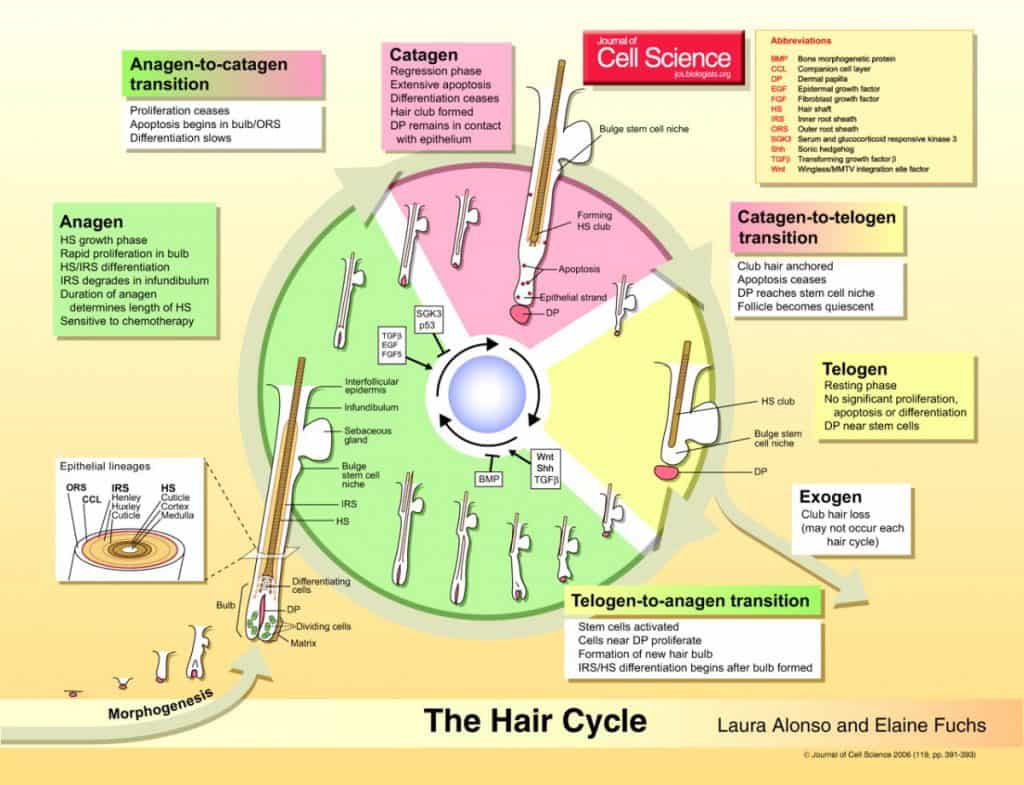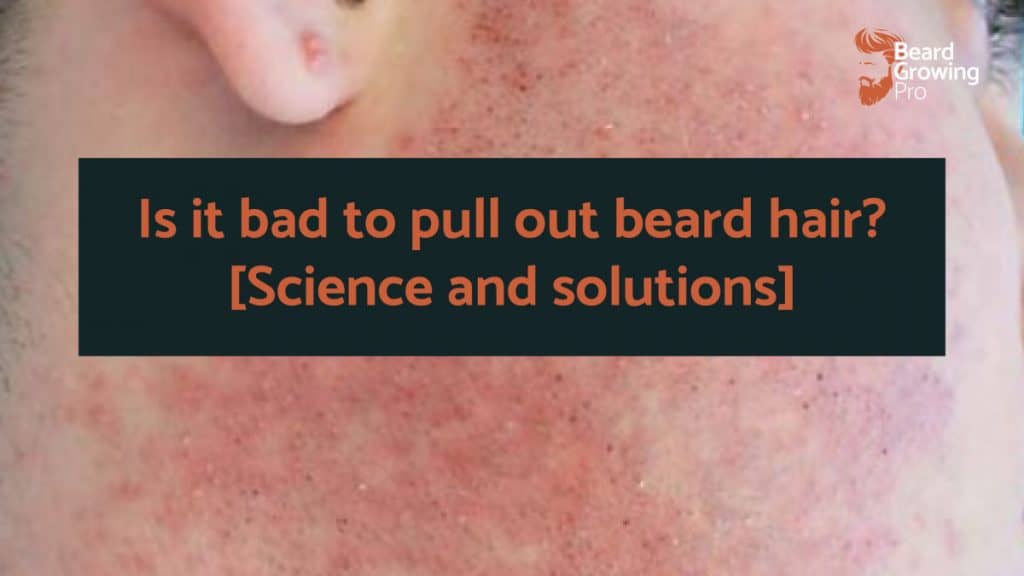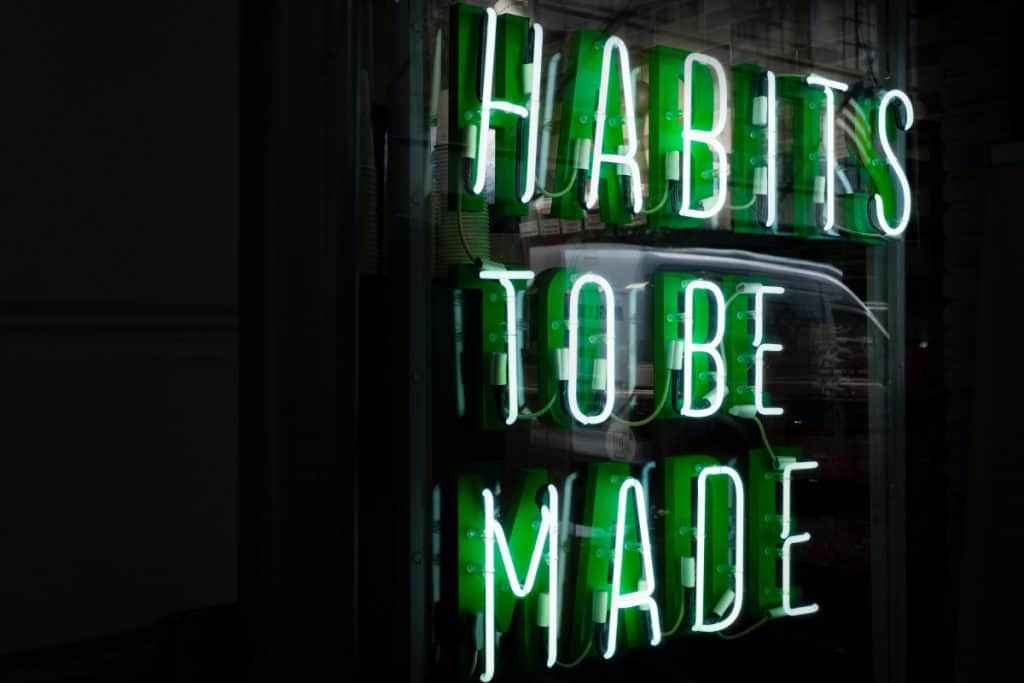Continually fidgeting and pulling at beard hairs can cause them to fall out. I know that the majority of the time I play with my beard I end up removing at least one hair. Over time, this can cause me to worry about the number of hairs that I am losing. In this article, we are going to look at whether or not beard hairs will grow back if they are plucked and what you can do to stop yourself from damaging the root of the beard hair and jeopardizing its future growth.
Beard hair will simply grow back if you do not pull it out too often. If you pull out your beard hair too often it will cause damage to the hair follicle by damaging the bulb and reducing the blood supply to fuel hair growth.
There is some evidence to suggest that plucking hairs out of a bald man’s head may stimulate growth – the initial studies were done in mice however.
Even though it seems relatively counterintuitive, studies from 2015 show that plucked hairs are able to communicate with each other causing an immune response that leads to regrowth of hair.
The study found that when hairs were plucked in a specific configuration the follicles in the skin were prompted to send out a distress signal that led to more hair is growing back. Plucking out 200 hairs triggered the growth of 1200 replacement hairs in mice.
There has been little research or scientific investigation into whether or not this is applicable to hairs on the face.
Common knowledge will tell us that if you wax an area of your body over and over again the hair grows back thinner and less dense. Does this mean, then, that the roots are getting damaged? Or, is it just a symptom of the new regrowth being brand-new hairs?
The answer comes down to how regularly you pluck your beard hair and the efficiency of the plucking to remove the hair bulb without damaging the hair root in the skin.
Article Contents
How long does it take for a plucked beard hair to grow back?
Typically, if a beard hair is pulled out and there is no root attached the hair will grow back after a period of resting. This can be anywhere from 2 to 4 weeks.
If you pull out your beard hair and there is a root attached to the end of the hair you will have to wait longer for the hair follicle to generate a new hair. If there is a small amount of red at the root end of the beard hair it is likely that you have significantly damaged the hair and it may not grow again in the same spot.
To understand, in full detail, the reasons why these different scenarios create a different outcome you must completely understand the hair growth cycle.
The hair growth cycle
Hair growth goes through three different stages.
- Anagen stage
- Catagen stage
- Telogen stage
In the anagen phase of the cycle, the cells in the root of the hair divide rapidly, slowly adding to the length of the hair. Hair will remain in the phase for anywhere from two to six years. Interestingly, about 80 percent to 90 percent of the hairs on your head are in this stage of hair growth.
The catagen phase is a short intermediate stage that occurs at the end of the anagen phase. This is the end of the growth phase of the hair and no more cells are produced to increase its length. The hair is detached from the blood supply and lasts for up to three weeks.
Telogen stage is after the short catagen phase. Here the hair is released from the skin and the hair follicle takes a well-earned rest for the about three months.
The full hair cycle has been well studied and a great summary of the major events of the hair cycle has been reported by scientists in a 2006 publication published in the Journal of cell science. For those of you that want all of the details and insider workings of each step of the hair cycle they have produced a infographics which you can view below.

You can see that the most important part of this cycle is the growth phase where there is rapid growth that originates from the bulb of the hair. If you damage the bulb in any way the cells which are produced at the bottom of the bulb can simply stop being produced.
What happens if you pluck beard hair?
If you pluck beard hair, the hair may be removed in a number of ways. Firstly, the hair may be removed from the follicle all the way to the root. This means that the hair follicle will need to regrow an entire hair which will likely grow back thinner and take longer to grow.
Alternatively, plucking a beard hair may cause the hair to snap at the level of the skin. This will result in a beard hair that grows back as if it has been shaved. You may be able to see the hair regrowth in as little as two days.
The last thing that can happen if you pluck a beard hair is that you damage the hair follicle and the hair bulb. This may damage the follicles ability to regrow and the more often you pluck beard hairs the more likely they are to become damaged to the point of not being able to grow beard hairs.
To look at the side effects of plucking and removing hairs from the human body a study performed in 1995 looked at the difference in growth response in women who had some hairs plucked whilst others were removed using electrolysis.
They found that plucking the hairs using tweezers resulted in a reduction of the hair diameter during each session. This means that the longer you pluck the same hairs out from your beard the more likely they are to become thinner.
Whether or not you can expect the same results on your beard is still yet to be determined by science.
Is it bad to pull out beard hair?
It’s only bad to polite beard hair if you want to grow a thick and dense beard. By pulling out your beard hair you will be significantly limiting your chances of your beard to grow thick and fall.
However, for people who want to remove certain parts of their beard growth completely pulling out their beard hair is an effective and cheap way of thinning out the hair growth over time.
Here are some of the effects of plucking your beard and, if you want a full rundown on this question, check out my other article – click here for everything you need to know about plucking out your beard.

- Changing hair thickness – plucking the beard hair will likely reduce the thickness of the hairs causing it to look thinner and wispy. Beard hairs can be plucked from the cheeks and the neck area for a much cleaner beard line but it can be incredibly painful.
- Damaging the hair follicle – you have to be very careful in plucking beard hairs because they are much easier to damage than scalp hairs. You can end up causing localised cutting, tearing of the skin, and introduction of bacteria into the hair follicle simply by plucking.
- Distorted hair follicle – distorting the hair follicle can very easily change the way that the hair is growing. Because of the elasticity of the skin the hair root can be pulled towards the surface of the skin when plucking. When the hair breaks away the route doesn’t always return to the same position. A hair follicle that lies flat against the skin can result in a different shape of beard hairs including corkscrews and spirals.
- Infection – plucking may cause the skin to microtrauma which can allow infection into the skin and the tweezers that you use may also introduce some bacteria.
- Ingrown hairs – pulling out your hairs can cause it to snap off and cause the follicle to snap deeper into the skin increasing the likelihood of ingrown hairs.
There are a number of ways that you can stop pulling out your beard hairs if you are finding it is a habit.
How to stop pulling out beard hairs
You can stop picking out your beard hair by learning to address habits, using physical barriers such as gloves to stop you from getting to the beard hair, and also turning to counselling and therapy for long-term recovery.
Address the underlying habit

Addressing the underlying habit of your beard plucking will enable you to create a new habit to replace the plucking. Habits rely on a habit loop which includes:
- A Cue – this is anything that triggers a habitual behaviour. It can be anything in the environment, any time, and also proceeding moments that you associate with this habit.
- The routine – the second part of a habit loop is the routine that you want to change or reinforce.
- Reward – this is the path the habit loop which is most important. This tells your brain that your habit is a good habit and you should continue doing.
Changing the habit involves changing the queue that you use and you normally associate with the habit. This will stop you from triggering that bad habit.
You can also change the reward so that when you complete something or you do something which benefits you. You can reward yourself. This may be a little bit of a sweet treat or it could be something else that makes you feel good about yourself.
Wear gloves
You can create a physical barrier between you and the plucking. For most people this is as simple as wearing gloves but you can also decide to use superglue, or Vaseline, on your fingers so that you do not get the tactile sensation in the case of superglue or you do not want to put Vaseline throughout your beard.

There are many other options for putting a physical barrier between you and your beard hair.
Use a fidget toy

Keeping your fingers busy is also another option. If you find that your habit is related to idle hands when you are doing other activities you can simply purchase a fidget toy or fidget spinner which will allow you to keep your hands occupied while your mind is actively focused on something else.
Counselling and therapy
If you are looking for long-term results you should consider counseling and therapy. Particularly if your habit is compulsive you will need professional help to break any behavior patterns and also address the absolute underlying reasons for your beard plucking and pulling.
Will beard hair grow back if plucked – Summary
In this article, we have gone over what happens when you pluck out beard hairs. We have gone through the science of beard growth and all of the dangers that a company regular beard hair plucking.
As long as you are not plucking out the same beard hairs over and over again it is unlikely to affect the density and thickness of your beard over a short period of time.



